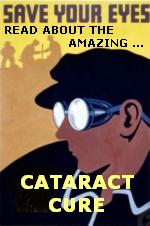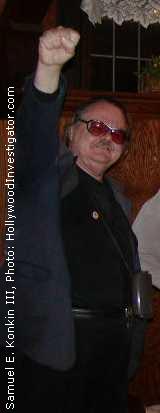|
Radical Roots of Libertarianism |
|
MENU
|
By the late Samuel
E. Konkin III, sent to this webmaster on September 20, 2001.
In October (Columbus Day weekend) the two groups met at the Hotel Dipomat [sic] in New York City at the first Libertarian Conference hosted by Murray Rothbard and Karl Hess. The following February, Los Angeles (USC) hosted the Left- Right Festival of Liberation, with such luminaries as SDS ex-president Carl Oglesby (who recently ran for Congress as LP), Robert LeFevre, Karl Hess (again), and many others not as well remembered. Five Hundred people showed up. The conference was covered in the LA Free Press and many Establishment papers, got extensive reporting on KPFK (which had a Libertarian radio show) and KUSC (which had TWO Libertarian shows, Lowell Ponte's and Ron Kimberling's). I attended all of the above except the first-mentioned (since I was a YAF "libertarian" minarchist until September 1969); I worked side by side with Dana Rohrabacher on the last-mentioned. He may be an Orange County congressman now, but back then he was the Johnny Grass-seed of the movement, travelling to YAF chapters, singing his libertarian folk songs, and "turning on" the conservatives so they would "tune in" to Libertarianism. Our Movement grew exponentially through 1972 and even 1973, going from a few thousand students to over 100,000 and recognition in such publications as TV Guide (where Edith Efron, a sympathizer, equated us with conservatives and liberals in an article about equal time provisions). One of the terms I personally coined, "minarchist," partly to amuse Murray Rothbard, appeared in Newsweek. Also in 1971, two Libertarians I had recruited from Columbia University (with the help of David Friedman), got a full-color, full-page cover in the magazine section of the New York Times, standing in front of a red fist above the words "Laissez Faire!" That was Stan Lehr and Lou Rossetto. Some of you know the latter from his entrepreneurial days as the original publisher of Wired magazine. We then organized an East Coast Libertarian Conference at Columbia with the help of Gary Greenberg (remember my posting, "One of Ours at Ground Zero"?). During that Conference, Jeffrey St. John attempted to defend minarchy from Roy A. Childs. St. John's trouncing pretty much ended minarchy as a serious intellectual position within the Libertarian Movement. Then and only then did David Nolan (who had been active in the earliest formation of the YAF Libertarian Caucus in 1967 but missed the explosive events "under the arch" in St. Louis in 1969 and had not been radicalized) announce the formation of the Libertarian Party. New Libertarian (my magazine, begun 1970, currently up to 188 issues, and usually #3 in circulation after Reason and Liberty/Libertarian Review), then called New Libertarian Notes, published a debate between David and me in the November 1972 issue which came out just before the presidential election. The Libertarian Party idea was met with universal scorn by movement activists, either on principle (LeFevrians, Revolutionary Rothbardians) or as hopelessly premature (Right Rothbardians, more conservative types). And Hospers-Nathan did get a pathetic vote total. Remember, few people calling themselves Libertarians in 1972 would vote and those were arguing over who would stop the war without socializing the economy the worst: McGovern or Schmitz (the Bircher candidate of the American Party). Surprisingly, both Rothbard and Ayn Rand came out for Nixon! What kept you partyarchs (a term meaning "sell-out anarchist who claims to oppose the State but embraces a State's Party," so technically you minarchists cannot be partyarchs) in the running was the defection of Roger MacBride, a Nixon elector, breaking his pledge (i.e., breaking a contract, appropriate for the start of a State or a Party) and voting for Hospers-Nathan. Thus was the LP put on the political map, and MacBride was rewarded with the next nomination (1976). The LP was taken over by "anarchists" (i.e., partyarchs, which is why I coined the term) starting with New York's Youngstein for Mayor Campaign in 1973. Then Ed Crane brought Charles Koch's billions into the LP (bought the national party) and the LP's highest vote total (for president) was achieved for Ed Clark in 1980 in an orgy of wasted spending. The LP has yet to recover to that level. Most anti-political Libertarians simply avoided contact with party supporters after 1974. Ironically, Harry Browne, who had made his fortune denouncing any form of political action, or even overt social action, in 1973, denounced me for going to LP meetings and inviting LPers over to debate us. The LP's total membership has never been more than 5% of the total number of people calling themselves Libertarian. There is a LOT more detail, but this should get you started. Feel free to check any and all facts presented here. Back in 1974, much of this was published in a special issue of New Libertarian called "Anarchist Graffiti: Where Were You in 1969?" and the rest in 180 or so other issues of NL. You can also find some of it in back issues of Reason and Libertarian Review, and if you can find them, The Abolitionist and Outlook. The Society for Individual Liberty, which ultimately absorbed most of the old YAF Libertarian Caucuses had a magazine (Rational Individualist) and a newsletter (SIL News); if you can find the issues, you'll get a lot of first-hand views of the events at the time. SIL was merged with the Libertarian International in 1990 to form the International Society for Individual Liberty (ISIL) which still hosts the majority of Libertarian Conferences around the world. Other countries with major Libertarian Movements (very few with parties) include England, Estonia, Costa Rica, Canada (especially Alberta, my home province), Australia, France, The Netherlands and New Zealand. Last I checked, only Costa Rica and NZ had parties, although Costa Rica calls its party Movimento Libertario or Libertarian Movement. They have a very popular congressman in office. Estonia has both a large Agorist (counter-economic, black market) AND an above-ground political movement. Although they didn't call themselves Libertarian, you might include Czechoslovakia's recent government of Vaclav Klaus. Then again, since they were ousted for corruption, you might not want to. Poet, playwright, and intellectual leader Vaclav Havel is still pretty hard-core. This is just a taste. At least you can't claim ignorance in our future exchanges. (Yes, some back issues of NL are still available; I sell them on the literature table at the Karl Hess Club every Third Monday of the month. KHC traces its history all the way back to 1971 when Dana Rohrabacher and Seymour Leon started the very first Libertarian Supper Club of Los Angeles.) -- Freely as ever, SEK3 (Original Libertarian, who earned his Capital L in the streets and the convention halls of the Battle of St. Louis) "War is the Health of the State." -- Randolph Bourne, 1918 |

 In July 1969, the
In July 1969, the